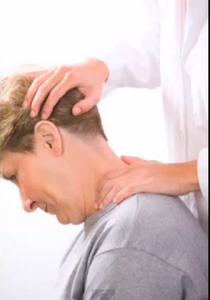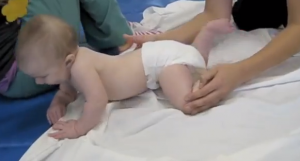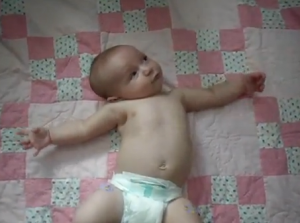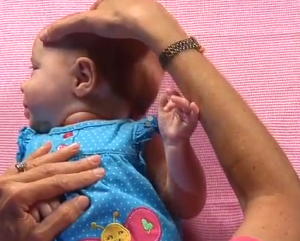What is Torticollis ?
It refers to a painful disorder characterized by involuntary contraction of the neck muscles, thereby causing the head to turn or twist in one direction. Torticollis may also result in uncontrollable tilting of the head, forwards or backwards.
Torticollis is classified into three types, namely congenital muscular torticollis, acquired torticollis and spasmodic torticollis.
- Congenital muscular torticollis is present at birth and may be caused due to abnormalities in fetal development or during delivery. The condition needs to be corrected before the affected child reaches 18 years of age, so as to observe some amount of improvement.
- Acquired torticollis occurs post birth due to various causes and problems that were previously not occurring in the child or the adult. It is a self restrictive disorder that occurs spontaneously and also fades away on its own.
- Spasmodic torticollis is also a temporary type of torticollis but is prone to recurrence. It is also known as cervical dystonia.
Thus torticollis is a rare condition that can be found affecting individuals across ages, but spasmodic torticollis generally tends to affect more women as compared to men. Also, it usually occurs in middle aged individuals. The symptoms of the disorders have a gradual onset till the reach a stage, where the signs do not elicit any progress in severity levels.
Torticollis has not known methods of cure. Occasionally, the condition may resolve on its own, without treatment and constant remissions are quite rare. The symptoms of torticollis may be decreased via botulinum toxin injections into the affected muscles. In rare cases, surgery may be recommended to correct the disorder.
Torticollis Symptoms
The contractions of the affected muscles in torticollis may result in twisting of the head in a number of directions, such as:
- Chin straight down
- Chin toward shoulder
- Chin straight up
- Ear toward shoulder
The most common kind of turning and twisting related to torticollis is the pulling of the chin toward the shoulder. A few affected persons may elicit a mixture of irregular head postures. A jerky action of the head may also be observed
A majority of torticollis sufferers may additionally experience pain in the neck that passes into the shoulders. It may often result in headaches as well. A few people affected by torticollis may exhaustion and disablement from the ensuing pain.
A few individuals who are initially affected by torticollis may experience similar signs in the surrounding areas like the face or the shoulder. However unlike the affected children, torticollis in middle aged adults does not spread to broader parts of the body.
Finally, the pain and disability experienced by patients of torticollis may eventually lead to development of depression in them.
Causes of Torticollis
In a majority of the cases, doctors are usually unaware of the reasons as to why torticollis occurs in certain individuals and its absence in others. A few cases of torticollis have been found to be potentially caused by:
- Some types of drugs, particularly specific anti-nausea or anti-psychotic agents
- Injuries of the neck, head or shoulders
Some of the risk factors which may increase the vulnerability to developing torticollis are as follows:
- The gender: As opposed to men, women are twice as likely to be affected by torticollis.
- Age: Torticollis is known to occur across age groups and even infants, but is more common in people between the ages of 40 and 70 years
- Family history: Individuals with a family history of torticollis or some other kind of dystonia have a greater risk to developing the condition.
Torticollis treatment
There is no cure for torticollis. In some patients the symptoms vanish on their own, while in others treatment is necessary for symptoms alleviation. Treatment includes the following:
- Medications: The symptoms of torticollis may be eased by use of a combination of various medicines.
- Botulinum toxin: It is a paralyzing agent that is normally used to smooth the facial wrinkles. It is directly injected into the affected neck muscles and improvement is almost immediate. The procedure has to be carried out every 3 to 4 months
- Muscles relaxants are also helpful, but can result in certain side effects.
- The medications used to treat tremors associated with Parkinson’s disease may be given along with the botulinum toxin injections.
- Prescription and over the counter pain killers may be recommended to alleviate the accompanying pain.
- Therapy: It is another way to reduce the symptoms of torticollis
- Exercise to enhance the flexibility and strength or the neck muscles
- Training is given in stress management techniques
- A neck brace may be used cautiously
- Surgery and other treatment methods: A doctor may suggest surgery, if other treatment procedures for torticollis do not produce results
- Certain muscles or nerves that are responsible for causing the contortions of the neck may be cut off via surgery. The procedure is known as selective denervation surgery and is not easily available
- DBS or deep brain stimulation: This surgical procedure for treating torticollis involves the insertion of a thin, insulated wire into the brain via a tiny hole made in the skull. The electrode tip is placed in that part of brain which regulates movement. It is connected to a battery pack located in the chest, via a wire that passes beneath the skin. The battery sends signals to the brain to interrupt the abnormal nerve signals that cause the neck distortions.
Torticollis in babies
Torticollis in infants is a manifestation of difficult childbirth or improper position of the baby in the womb. This is medically called ‘congenital muscular torticollis’ or infant torticollis.
Most babies do not feel any pain, there is just discomfort in turning the neck or there is a tilt to the head. Torticollis in babies is quite common and can be present at birth and may take up to 3 months to show up.
Fetal cramping in the uterus or an improper positioning where the baby’s bum faces the birth canal can lead to torticollis in babies. Using forceps or vaccum objects to deliver a baby during childbirth can also lead to this problem. Due to this, there is a pressure on the baby’s sternocleidomastoid muscle (SCM), which runs from behind the ears to the collarbone.
Torticollis in babies – symptoms
Torticollis in infants – treatment
Encourage your baby to turn the head in both directions, this can slacken rigid muscles and tighten the ones that are loose. Your doctor can also do a physical examinatnio to find out how far the baby can turn the head. He or she can teach you some exercises that are designed to stretch the neck which you can straighten the baby’s neck. Alternatively, the doctor may also suggest taking the baby to a physical therapist for additional treatment. If your baby is less than six weeks old and has an uneven hip, the doctor may perform an ultrasound to find out if it has developmental hip dysplasia.
Torticollis exercises for babies
When the baby wants to be bottle-fed or breast-fed, keep them in a way that makes the baby turn away fro the side it normally latches on to. Always encourage the baby to sleep on his her back. While playing with your kid, draw its attention with toys and sounds that can make it turns its head away in both directions.
Torticollis Pictures





Dear Sir,
Could laser technology be used for curing Torticollis affecting my neck, causing my head to turn from left to right all the times in many years? Any new & latest advances in the treatment of this sickness. Kindly advise.
Thank you very.
Lo